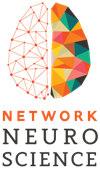Reconstructing brain functional networks through identifiability and Deep Learning
IF 3.1
3区 医学
Q2 NEUROSCIENCES
引用次数: 0
Abstract
We propose a novel approach for the reconstruction of functional networks representing brain dynamics based on the idea that the co-participation of two brain regions in a common cognitive task should result in a drop in their identifiability, or in the uniqueness of their dynamics. This identifiability is estimated through the score obtained by Deep Learning models in supervised classification tasks; and therefore requires no a priori assumptions about the nature of such co-participation. The method is tested on EEG recordings obtained from Alzheimer‘s and Parkinson‘s Disease patients, and matched healthy volunteers, for eyes-open and eyes-closed resting state conditions; and the resulting functional networks are analysed through standard topological metrics. Both groups of patients are characterised by a reduction in the identifiability of the corresponding EEG signals, and by differences in the patterns that support such identifiability. Resulting functional networks are similar, but not identical to those reconstructed by using a correlation metric. Differences between control subjects and patients can be observed in network metrics like the clustering coefficient and the assortativity, in different frequency bands. Differences are also observed between eyes-open and closed conditions, especially for Parkinson‘s Disease patients.通过可识别性和深度学习重建大脑功能网络
我们提出了一种新的方法来重建代表大脑动力学的功能网络,该方法基于两个大脑区域在共同认知任务中的共同参与应该导致其可识别性下降或其动力学的独特性。这种可识别性是通过深度学习模型在监督分类任务中获得的分数来估计的;因此,不需要对这种共同参与的性质进行先验假设。该方法在阿尔茨海默氏症和帕金森病患者以及匹配的健康志愿者的脑电图记录上进行了测试,测试了眼睛睁开和闭上的静息状态;并通过标准拓扑度量对得到的功能网络进行了分析。两组患者的特点是相应脑电图信号的可识别性降低,以及支持这种可识别性的模式的差异。得到的功能网络与使用关联度量重建的网络相似,但不完全相同。在不同频带的聚类系数和分类度等网络指标上,可以观察到对照组和患者之间的差异。在睁眼和闭眼的情况下也观察到差异,特别是对于帕金森病患者。
本文章由计算机程序翻译,如有差异,请以英文原文为准。
求助全文
约1分钟内获得全文
求助全文

 求助内容:
求助内容: 应助结果提醒方式:
应助结果提醒方式:


